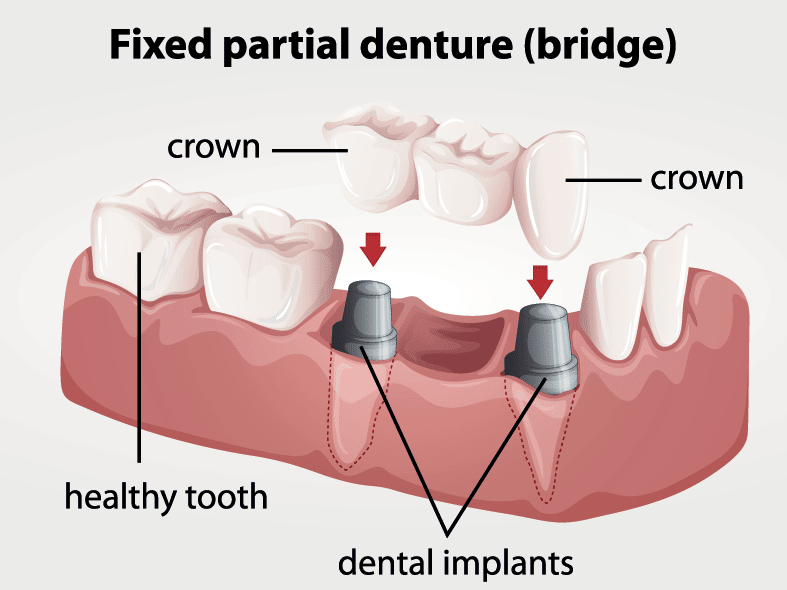What’s the Difference Between Dental Crowns and Bridges?


What do you know about dental crowns and bridges? These restorative devices can save your smile, and your health. In many countries, once a tooth has decay or infection, it is simply pulled and that hole in your smile is there for life. However, in the United States, there are many options available to help treat a patient’s tooth decay or infection. We can treat decay and provide patients with options such as dental crowns and dental bridges to restore areas of the mouth with missing teeth. Let us show you what each of these dental options are and when we would use each to restore a patient’s smile!
Restorative Dentistry: Dental Crowns and Bridges
Dental crowns and bridges are fixed prosthetics in restorative dentistry treatment. They work to not only improve the aesthetics of your smile, but also the function of your smile. Missing teeth can cause many unforeseen problems that crowns and bridges solve.
When is a Dental Bridge Recommended?
If you’re missing one or more teeth Dr. Ania may suggest you have a dental bridge to “bridge” the gap. Leaving gaps in your smile allow teeth to shift and move in ways that can affect your overall bite. An imbalanced bite can lead to problems like gum disease and temporomandibular joint (TMJ) problems and pain.
Bridges take the place of one or more missing teeth. They close the gap where teeth are absent. They are installed with cement and affixed to natural or implanted teeth that serve as the “abutments” or bridge anchors. Porcelain or ceramic bridges are fabricated to match the color of your natural teeth.
Dental Crowns
Dental crowns cover the structure of a damaged or weakened tooth or to cover a dental implant post. Dental crowns offer a cosmetic solution that functions like a normal tooth. Ceramic crowns are prescribed when a tooth has been fractured, cracked, sustained a large cavity, or to replace outdated fillings. Our dental crowns are handcrafted in our lab with safe, metal-free ceramic materials. The ceramic material is strong enough to support full biting force just as if it was your natural tooth.
Same-Day Crowns
Technology has allowed us tools to produce for our patients same-day crowns. How? Digital scanners and in-office milling machines that work together to create a crown during your time in-office. First, we scan your teeth to create an exact impression of your existing bite. (This digital scanner replaces the old impression molds that we used to create in a first appointment.) Then, the digital images sends information to the milling machine that makes a crown. This crown then goes into an oven to crystallize and set as you wait. Instead of taking days or weeks, the entire process from seeing your tooth to receiving your crown takes about 2 hours.
The Importance of Oral Hygiene for Long-Lasting Dental Crowns and Bridges
While oth crowns and bridges are built for longevity, they will, eventually, need to be replaced. To prevent these fixed prosthetics from failing prematurely, pay specific attention to your dental hygiene habits. Brush your teeth thoroughly to prevent tooth decay–it weakens bridges and crowns connected to your teeth. Tooth decay also weakens the gum tissues that are helping keep your crowns and bridges in place. Rinse the gum lines of your teeth and tenderly treat inflamed gums. Any redness of your gums can put your dental work at risk. Promptly call Dr. Ania for a consultation if you notice these signs of gum disease.
Call for a Dental Crowns or Bridges Consultation
Dental crowns and bridges offer you an effective, natural-looking way to correct aesthetic and functional problems with your smile. Learn how you could benefit today by calling Dr. Ania’s office at 303-443-0998 for your comprehensive examination and consultation!


